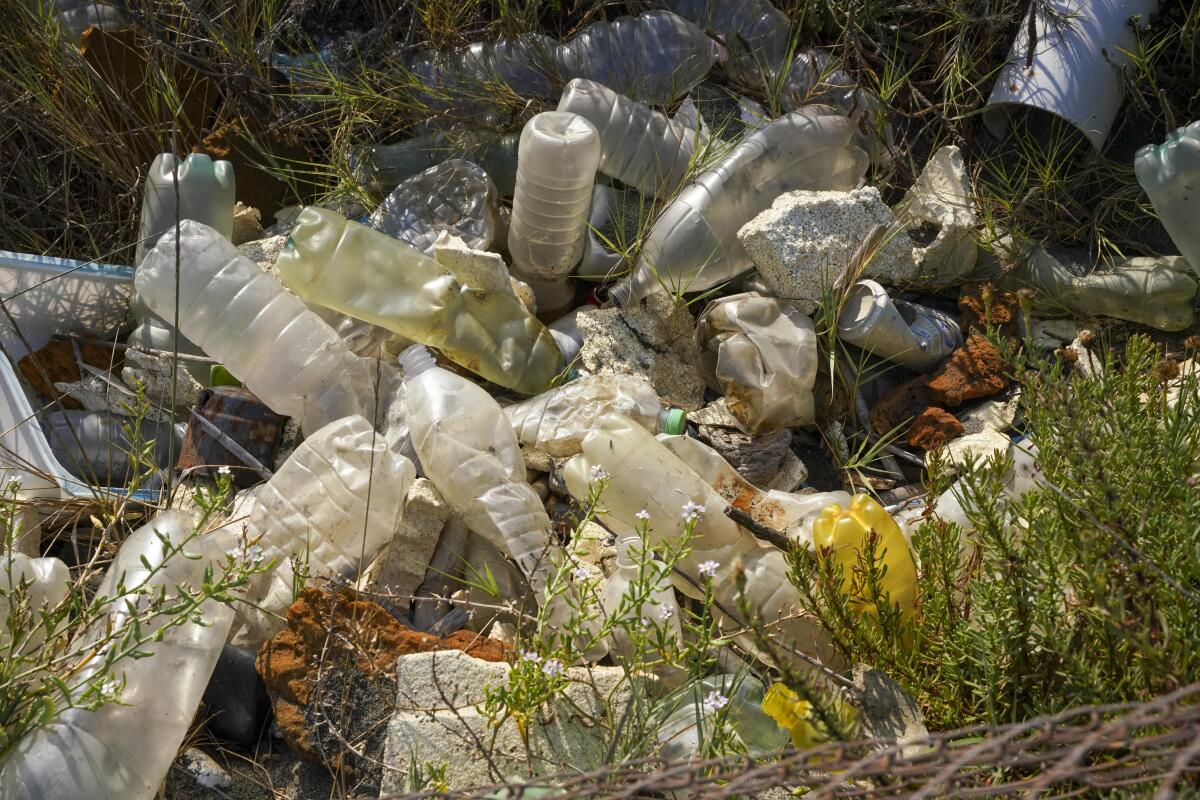Editorial: California has the cure for the plastic plague. Let’s use it

- Share via
Long before the novel coronavirus that causes COVID-19 first jumped to humans, the world was dealing with another plague threatening human health and well-being: plastic trash.
Plastic from single-use products has been filling up landfills over the last seven decades, ever since it became widely used in commercial products. In more recent years, discarded plastic has increasingly turned up in oceans, lakes, rivers and on the shores of waterways across the globe. Plastic has been found in the stomachs of dead marine life and in drinking water, food and the very air we breathe.
In recent years, the world started to wake up to the threat of disposable plastic trash and take steps to curb its use. Then the pandemic hit, and humans turned to plastic goods for protection.
Plastic face masks, gloves and face shields have guarded countless people from exposure to the coronavirus. Plastic takeout containers have allowed restaurants to continue to operate when in-person dining was banned. Plastic dividers at grocery store checkout counters have kept essential workers safe from infected customers. And groceries wrapped in layers of plastic packaging have allowed consumers to feel their food was safe from contagion.
While plastic has helped humans avoid infection and plastic medical equipment has been used to save lives during the pandemic, it has come with a cost: more plastic trash. It’s as disheartening as it was unavoidable, given the urgent need to slow the spread of the virus. But that doesn’t mean humans can’t and shouldn’t continue to find ways to reduce plastic trash. Quite the contrary.
California lawmakers have a proposal before them to do just that, an ambitious plan that would shift the state from the failed recycling policies of the past to a more promising approach. Packaged into two identical bills, Senate Bill 54 by Sen. Ben Allen (D-Santa Monica) and Assembly Bill 1080 by Assemblywoman Lorena Gonzalez (D-San Diego), the proposal would establish the groundbreaking California Circular Economy and Plastic Pollution Reduction Act, which would put the responsibility for and the cost of dealing with discarded plastic packaging and takeout containers where it belongs: on the companies that make them, rather than the consumers who buy them.
The bills would require that by 2032, products sold in plastic packaging in the state have a proven recycling or composting rate of 75%. If products couldn’t meet that high bar, they would have to be wrapped in some other material that does. The mandate could end up benefiting the entire country because manufacturers aren’t likely to switch packaging for just this one, enormous consumer market.
A single-use plastic tax appears to be headed for the 2022 state ballot, and it would raise the funds to help implement the law. But there’s no reason for lawmakers to wait two more years to get started addressing the scourge of plastic trash that has been decades in the making.
More to Read
A cure for the common opinion
Get thought-provoking perspectives with our weekly newsletter.
You may occasionally receive promotional content from the Los Angeles Times.










